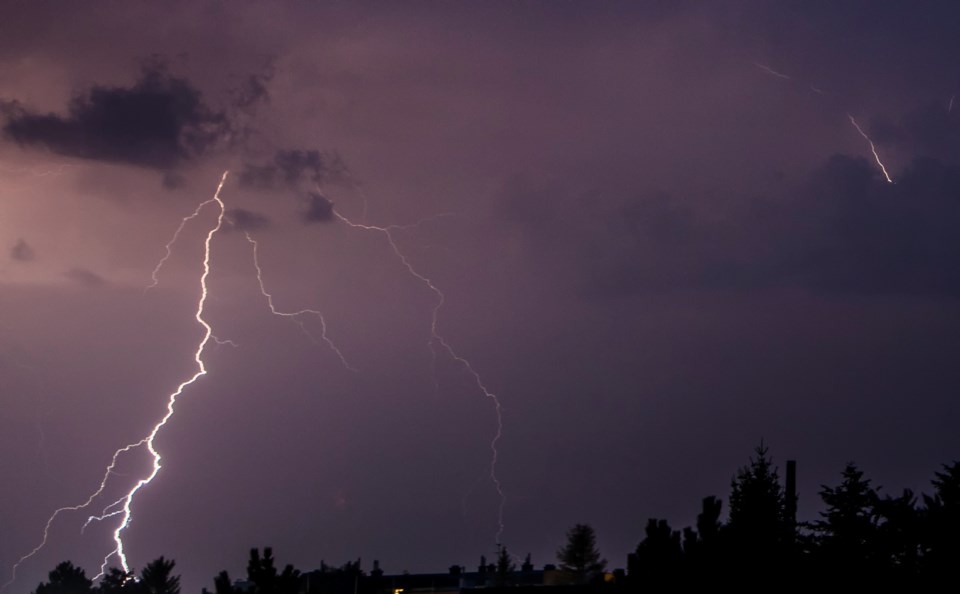Two weeks ago, I woke up to the sound of thunder and lightning striking the hills around Whistler. It was five in the morning, an hour I’m more likely to see at the end of a long night than wake up for on purpose. And while I usually love a good thunderstorm, it really wasn’t a good time for anyone.
I had an escape bag packed and ready, because that’s what you’re supposed to do when you live in a forest interface during wildfire season, and the car was gassed up and ready to. It hasn’t been much less than three-quarters full since this long, dry summer started way back in April (actually July of 2022 if you go by precipitation), but as I looked out the window I started wondering what else I could be doing in that moment to prepare for what I assumed would end in our evacuation.
Incredibly, nothing in Whistler caught, and only a few small fires were reported to the north of Pemberton. The storm started dozens of fires when it made landfall on Vancouver Island the previous day, but somehow we made it through. We got lucky—there’s really no other way to look at it. Whether we continue to be lucky is the real billion-dollar question.
Because it’s not over yet, even though the temperatures are cooling down and days getting shorter. The BC Wildfire Service has been quite clear that this fire season won’t be over until we start getting a substantial amount of rain or there’s a layer of snow sitting on top of everything. And I’m even not sure snow will be enough—Colorado had one of the most destructive wildfires in its history in late December 2021, with more than 1,000 homes destroyed and tens of thousands left without power as they rang in the New Year. Snow made almost no difference in that situation.
While it’s hard not to enjoy the warm weather we’ve had at some level, it’s also impossible to understate the amount of danger we’re in. As someone pointed out recently in this paper’s letter section, we need to stop pretending the province is going to swoop in and save us from a destructive wildfire because of tourism and expensive real estate. It’s not like West Kelowna is known for its poverty, or was unprepared, or had no previous experience with fires. When it’s this dry, fires can move faster than fire crews could ever hope to match.
This is now officially the worst fire season on record for British Columbia by a huge margin. As of last week, some 22,000 square kilometres have burned—about 4,000 more than the previous record set in 2018. That’s an area about four times the size of Prince Edward Island.
And we’re still on fire. Although numbers change daily, as of the first week of September there were still more than 400 active wildfires around the province, most of them out of control. It could be months before we’re out of the woods, so to speak.
And then what?
What did we learn from West Kelowna? Shuswap? Gun Lake?
Come to think of it, what did we learn from Lytton in 2021? Or Fort McMurray in 2016?
We’ve done quite a bit of thinning of our forests and FireSmart goes full tilt from April to October, but there are lots of Whistler neighbourhoods that are clearly overgrown and where you still need a permit to cut down trees. The provincial FireSmart guidelines recommend a 10-metre buffer between homes and coniferous trees and no vegetation within 1.5 metres—and there really aren’t many homes in this town that can say they’re compliant. We need to do a lot more, and we need to do it soon. Climate change is real—we’re all experiencing it in some way—and all signs are pointing to the situation getting progressively worse.
One thing I would like to see happen is for Whistler to have a volunteer crew on standby. I used to do a day of wildfire training every year when I planted trees for tuition and beer money, and we always had to haul around a huge stash of fire-fighting equipment to every cutblock, just in case—water packs, Pulaski picks/axes, shovels, helmets, a chainsaw, hoses, a gas-powered water pump, etc. It was made very clear to us that we could be deputized at any time to fight a fire.
Now, I’m not saying we should send a bunch of locals with a day of training into the woods to fight active wildfires, but there are things that a local volunteer crew can do that would be relatively safe and could help out the provincial crews while they tackle the main fire. We could help create fire breaks, go to burned areas to ensure the fires are completely extinguished, hike out to areas hit by lightning strikes to see if anything is smouldering, patrol campsites, help with evacuations, and check on sprinklers, generators and other gear placed in key areas.
The worst part about standing at my window and watching lightning flash around the valley was feeling powerless over what might happen next. It felt even worse than being awake at five in the morning.




